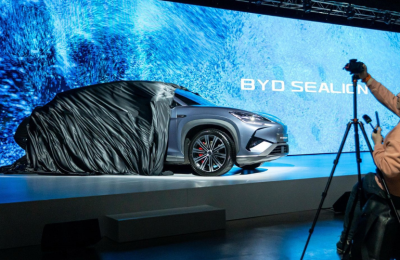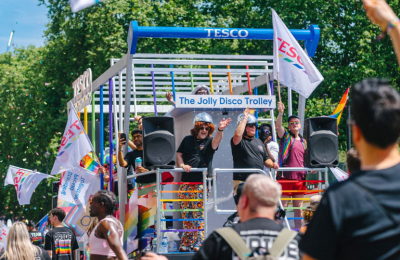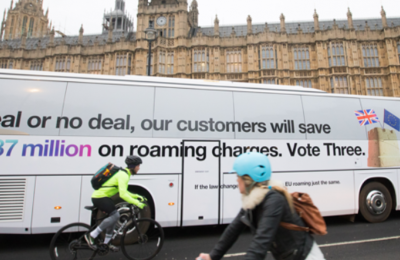The UK retail environment is changing at the fastest pace in its history, says Apostolos Lambrianides, Group Marketing and PR Manager at The Delta Group.
If you were to believe the headlines, the death of the high street is imminent. Since the collapse of Woolworths in 2009 the UK retail scene has seen a wave of high profile administrations affecting the high street…those Friday evening trips to the local Blockbuster are a thing of the past!
However in reality retailers are learning to innovate – looking at new ways to engage with audiences and understanding the changing consumer dynamics that are determining the way they shop.
So here we have a look at some of the key consumer trends that have already impacted the way brands and retailers approach product positioning and marketing, as well as some of the new retail challenges and (and opportunities) you should be aware of now…before it’s too late!
The Millennial Market
The story of the millennial is only too familiar to readers of the Drum. Born between the early 1980’s and early 2000’s, these guys are digital natives who have grown up and matured with mobile technology and as such, expect to be able to use it in every aspect of their life. Constantly on a variety of social media platforms and documenting their every move, the convenience of the mobile device is paramount to this group. And unsurprising the UK’s 14 million strong millennial population are more likely to start and end their journey on their smartphones than any other age group, who have started turning their mobile device into a handheld wallet.
Improving the payment experience through self-checkout kiosks and advanced digital payment technologies is essential to keeping the millennial shopper. The relentless focus on perfecting technology has set a new standard across the industry that millennials now accept as the norm. Retailers must be able to provide streamlined, user-friendly systems and processes in order to retain the millennial.
However the challenge doesn’t end there for retailers, as a personalised retail experience is equally key. Whether this is online or in-store, millennials seek customer service professionals who understand their preferences and make recommendations tailored to their specific needs. Millennials want a customer-centric experience in which they feel wanted and valued. In order to do this, retailers need to closely examine what they’re currently doing with customer data, and ensure this information is being utilised to deliver a more personalised in-store experience.
The Conscious Consumer
Over the years, as manufacturers have looked towards cheaper and quicker ways of getting their products to customers, retail manufacturing practises have taken a serious toll on the environment. Second only to oil, the retail manufacturing industry is the most polluting industry on the planet. However, increasing awareness around these issues – thanks largely to the growing influence of the millennial audience (yes, those guys again) – has given rise to the conscious consumer.
Loosely speaking, being a conscious consumer means shopping and consuming with greater thought given to aspects of the product and business you’re buying from. Thoughts include: Are they Fairtrade and are their products responsibly sourced? And are they environmentally friendly? Ultimately this group aim to seek out ways to make positive decisions about what to buy and look for a solution to the negative impact consumerism is having on the world.
Another key concern for the conscious consumer is the way in which brands target audiences, both through advertising and the positioning of their products. As products and services expand to reflect the rich cultural makeup of the population, advertising efforts can be observed leading with non-centred perspectives that fall in line with a view to omni-culturalism, whereby effectively celebrating difference as the only norm. This progression demonstrates the need for brands to engage consumers around values less tied to traditional markers of identity such as race, geographic location and gender.
The Power of Omni-Channel
The omni-channel approach defines the new way in which consumers shop: by using all the options available to them. It could be using a desktop, laptop, tablet, smartphone, smart TV; they might go direct to a website to research a specific product or arrive through affiliate channels or email; engage through review platforms, apps and so on.
In the UK shoppers say that social media has an influence over what they buy (under 25’s – 60% and 25-34 – 50%), while conducting prior online research on the retailer’s own site or sites of other retailers led to 13% greater in-store spending among omni-channel shoppers.
Although not a retail strategy, it’s still essential to understand the multiple methods people use in their path to purchase as, ultimately, the more channels customers use the more valuable they are! A recent Google study found that omni-channel shoppers are three times more valuable to a brand, with Macy’s stating it is in fact as high as six times.
The Delta Group understands the challenges faced by international retailers, brands and entertainment companies that operate in fast-paced, competitive environments. For over 20 years, they’ve provided end-to-end marketing services designed to integrate supply chains and help companies improve their marketing agility, reduce costs and achieve maximum returns on marketing investment.

























